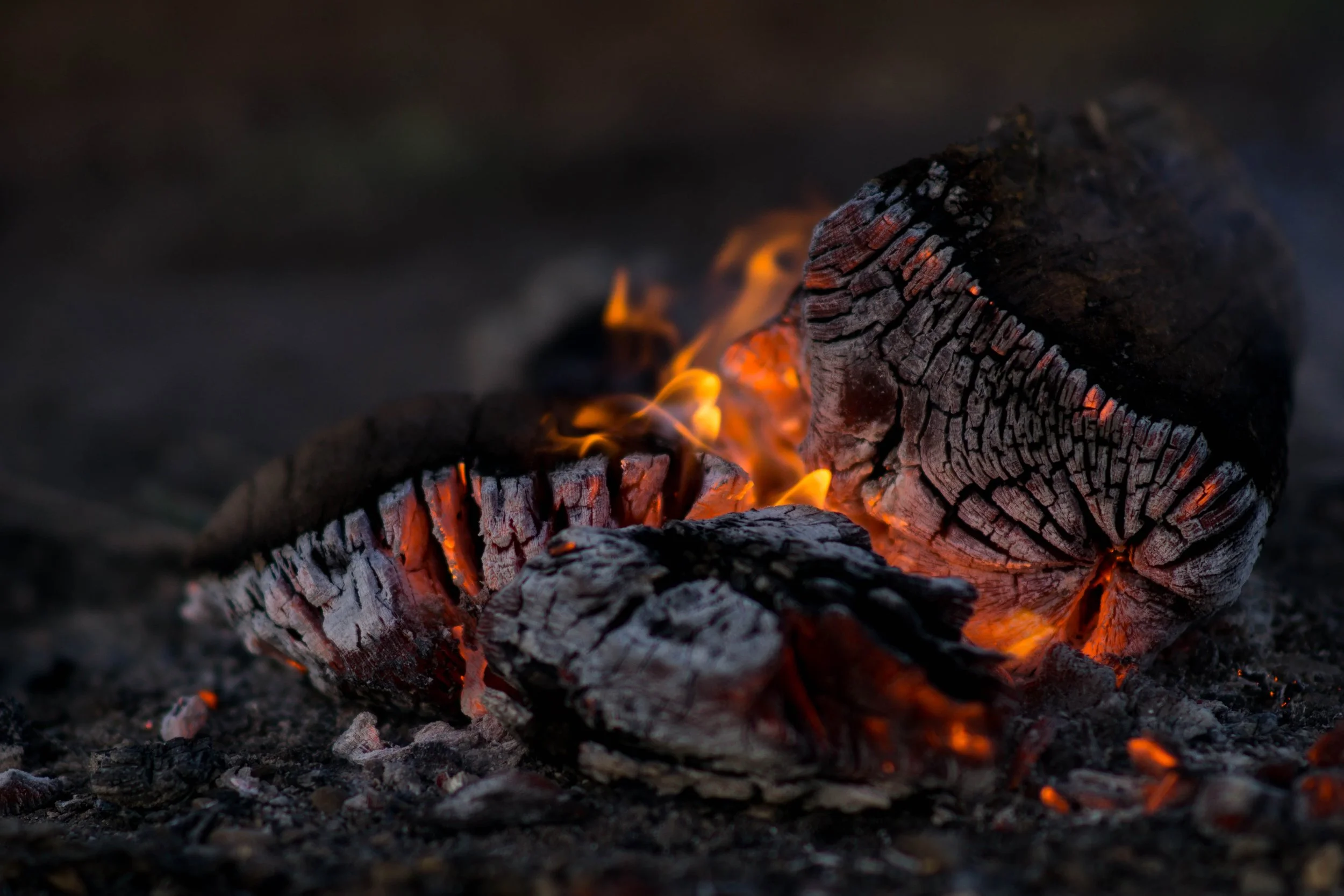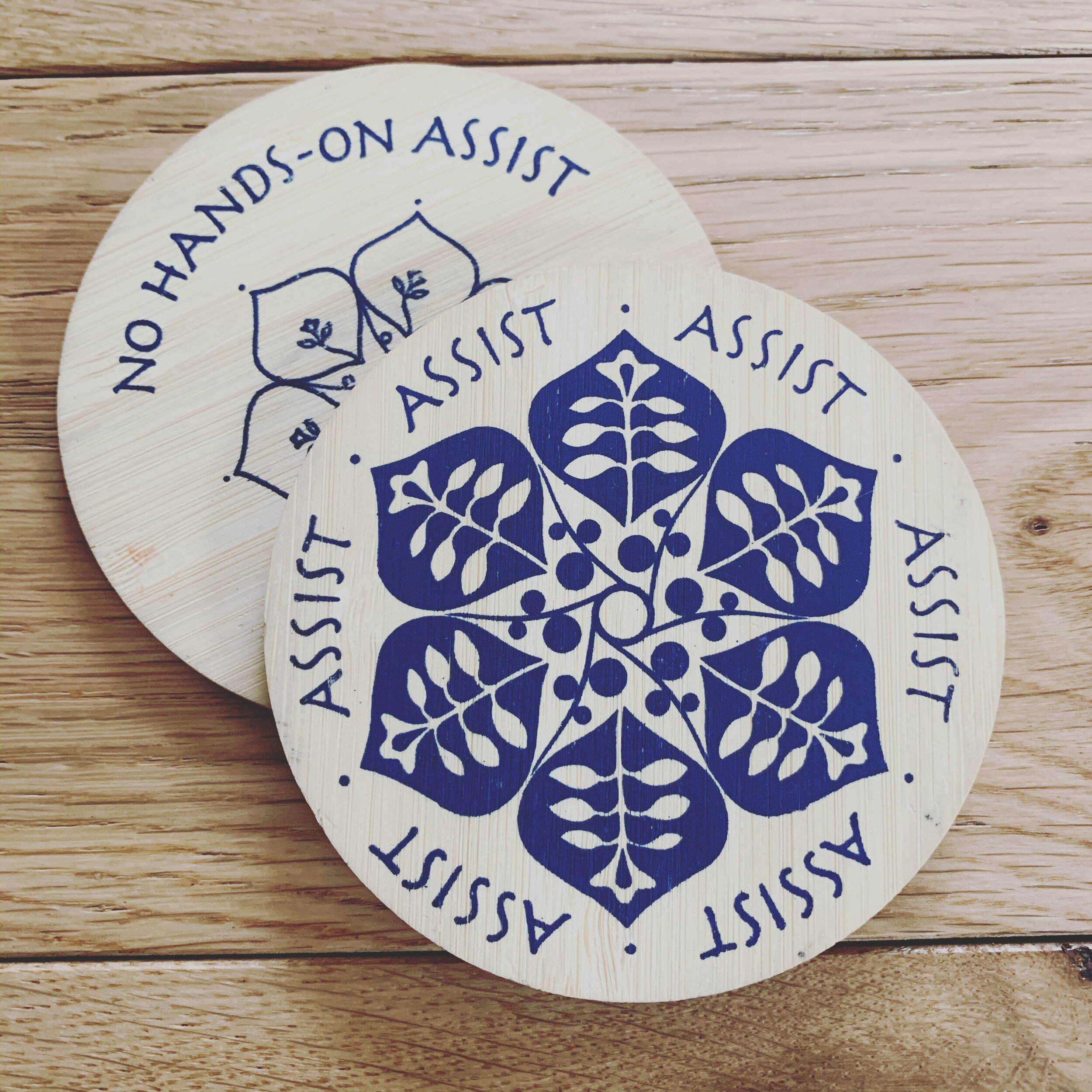Slow Burn
/I recently had a conversation with a student during one of our private sessions about the idea of the slow burn in yoga practice.
If we were to compare our practice to a fire, we want to tend the fire of practice with intention and care. But first, what does a healthy fire look like?
In my experience, a healthy fire burns slow and low over a long time.
If we give it too much fuel too fast, it gets too hot and will quickly burn in a raging, uncontrolled way until all the fuel is gone and there is no heat to speak of. If we don't give it enough fuel or that fuel is too wet, then the flames will sputter and strain to light the fire. If the air is dry it will have different effects on the fire than if it were lightly raining.
Over time, we learn to feed our fire the appropriate fuel at the right time so that it maintains a sustainable warmth without too much effort on our part.
In yoga philosophy, we refer to tapas as the discipline, fire, and burning enthusiasm for our practice.
As we embark on a practice, we want to take care not to practice too long or too hard. In my opinion, a sign of a healthy practice (like the healthy fire) is that it leaves us grounded and energized (not tired or scattered) and can help us sustain the seasons of change in our life with grace over the long-term.
How do we maintain the slow burn of our practice?
This will look a little different for everyone. A lot of it depends on the fuel that your life provides. We all have a different constitution and natural tendencies, and what is challenging for one person may be easy for another. Learning to listen deeply inside will give us more insight than focusing on what we can see of another's practice (which is only one small piece of the puzzle).
Start to look at the life factors that impact your practice.
What do you do for work each day? Do you have a long commute with time in the car? Do you spend most of your time on your feet using your body to lift heavy items? Do you sit at a computer for 8 hours? Do you have a young child that wakes throughout the night? Are you care-taking an aging parent? Is your day mentally stressful? Is your day emotionally stressful? Are you grieving the loss of a loved one? Are you transitioning from one career to another? Do you have an injury or illness?
As you answer these questions and look at the fuel your life provides for your practice, look for practices that provide a counter-balance and/or nourishes what is present in your life NOW.
Know that as your life goes through seasons of change, what your practice looks like should be responsive as well.
Know that your practice will evolve throughout your life.
Be creative, explore, and most importantly really listen to the answer when you ask yourself:
"What do I need now?"
"What will serve me in the long-term?"
If you find your way into a group class, please try to find the appropriate style and level of class for your current needs. (i.e. don't go to Vinyasa 2-3 when you need Restorative). Honor what your body needs and don't be afraid to speak with the teacher before class starts. They may have a plan that doesn't suit your needs that day, but will hopefully be able to assist you in modifying.
Ideas for Tending the Fire of Practice
I think it's important to recognize and acknowledge that our practice goes through seasons of ebb and flow. There have been times in my life that my practice was strong and other times where it was soft.
My home practice has allowed me to respond to my changing life. Here are some ideas for tending the fire of your practice as your needs change:
When You Are Feeling Physically Worn Down
When I'm feeling physically worn down I tend to practice SATYA (Sensory Awareness Training for Yoga Attunement), restorative, and supported inversions (like legs up the wall and I use the chairs for headstand and shoulder stand).
I emphasize getting to bed early, say no to social engagements, eat simple home-prepared meals, and focus on getting the down time that I need.
When You Are Feeling Mentally Worn Down
When I'm feeling mentally worn down, I tend to do many of the same things as I do for physical tiredness - but I add in standing poses on a chair and supported back-bends on a chair. The physical engagement with the support of the chair helps to lift my mood and get blood flowing to the heart and chest. I do the chair-supported inversions, emphasizing the shoulder-stand and plow pose.
I might listen to an uplifting podcast (Modern Love is a favorite) or walk in the woods or by the ocean. Acupuncture or Cranial Sacral Therapy are also very healing for me during these times.
When You Are Feeling Anxious or Stressed
It can really help me to move a little when I am feeling stressed. Although, I have to be careful not to let the anxiousness race me through the postures.
I'll often do a practice that begins with SATYA that involves more engagement and a bit more challenge. I then move into some sun salutations with an emphasis of holding the shapes for a few breaths each. I focus a lot on standing poses and one-legged balancing poses, and I try to hold each pose for close to a minute. Then, seated twists and forward folds help me root further into the earth - and the addition of a sand-bag can be quite helpful. I end with a supported inversion and a long savasana. Sometimes, I find it helpful to weight my body with the sandbag (but only if it feels good).
I also increase my time in meditation on these days and make a point to get outside into the woods or by the ocean. The waves help me find a deep breath, the trees help me find my roots, and a creek reminds me that all things come and go. I reach out to my mentors and welcome the support and encouragement that they offer.
When You Feel Tired From Lack of Movement
This is when my practice needs a good warm-up. I can't just jump right from sitting at my desk for 8 hours or in the car for an hour to Surya Namaskar A. My body needs a little coaxing.
I start with some SATYA movements and some basic lunges. Once I feel less "sprung" from the tightness of sitting, I am ready to do some dynamic standing poses and sun salutes. I might emphasize preparation for handstand and/or active backbends (like wheel). Always ending with some twisting, hip opening, and supine work to ground before a long savasana.
When You Are Experiencing Pain
Pain is your body's way of telling you something needs to change. When I'm in pain, I often dedicate my practice to taking care of whatever is hurting. I take it slow, and explore without pushing into what is bothering me. I go to others for assistance (I have a whole team of bodyworkers that support me in finding balance with a changing body). I find ways to move that don't make my pain worse, and I rest as long as needed.
Building a Self Practice
Building a self practice is rewarding on so many levels. By unrolling your mat and creating a space in your home for practice, you have the opportunity to really explore what your body needs, wants, and has aversion to in the moment.
Listen to your body and breath, but also listen to the stories of your mind and heart. You may start to notice tendencies in your practice that are feeding an already raging fire or dampening the sputtering flames. Explore what needs to evolve as you learn more about yourself over time and in the moment.
While I covered a few of the circumstances that I adjust for in my practice, I realize that we each have our own set of unique circumstances that are not covered here. I'd love to support you in your practice over the long run and I hope that we have the chance to do that.
Please reach out and let me know how I can support you in tending the fire of your practice.



